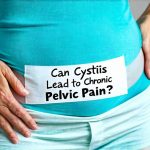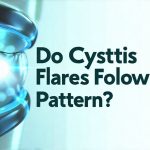Pelvic inflammation is a surprisingly common issue affecting millions worldwide, often shrouded in silence due to discomfort and stigma. It can manifest in various forms – from chronic pelvic pain syndrome (CPPS) to inflammatory bowel disease (IBD)-related flares, endometriosis, interstitial cystitis/bladder pain syndrome (IC/BPS), and even post-surgical inflammation – significantly impacting quality of life. Traditional treatments often involve pharmaceuticals with potential side effects or invasive procedures, leading many individuals to seek complementary and alternative therapies. This search for gentler solutions has recently spotlighted light therapy, specifically red and near-infrared light therapy (RLT/NIR), as a potential avenue for reducing pelvic inflammation and alleviating associated symptoms.
The promise of light therapy lies in its non-invasive nature and proposed cellular mechanisms. Unlike medications that circulate throughout the body, RLT/NIR targets specific areas with focused wavelengths of light. This targeted approach aims to stimulate mitochondrial function within cells, boosting energy production (ATP) and prompting cellular repair processes. While research is still evolving, preliminary studies suggest this can lead to reduced inflammation, pain modulation, and improved tissue healing – all crucial components in managing pelvic inflammatory conditions. It’s important to understand that RLT/NIR isn’t a ‘cure-all,’ but rather a potential adjunct therapy that could be incorporated into a comprehensive treatment plan under the guidance of healthcare professionals. Perhaps incorporating pelvic exercises alongside these therapies will prove beneficial to patients.
Understanding Pelvic Inflammation & Current Treatments
Pelvic inflammation is rarely a singular diagnosis; it’s often a symptom stemming from diverse underlying causes. As mentioned previously, conditions like endometriosis (inflammation related to uterine tissue growth outside the uterus), interstitial cystitis/bladder pain syndrome (chronic bladder inflammation), and inflammatory bowel disease (affecting the digestive tract) can all contribute to pelvic discomfort. Even post-surgical inflammation following procedures such as hysterectomy or cesarean section can create chronic issues. The symptoms are equally varied, ranging from persistent pelvic pain – often described as aching, burning, or stabbing – to urinary frequency/urgency, bowel irregularities, fatigue, and even sexual dysfunction.
Traditional treatment approaches typically involve a combination of medication and physical therapy. Pain management might include over-the-counter analgesics, nonsteroidal anti-inflammatory drugs (NSAIDs), or stronger prescription pain relievers. Depending on the underlying cause, other medications like hormonal therapies (for endometriosis) or antibiotics/anti-inflammatories (for IBD flares) may be prescribed. Physical therapy focuses on strengthening pelvic floor muscles and improving overall function, but it doesn’t necessarily address the inflammatory component directly. Surgery is sometimes considered as a last resort for conditions like severe endometriosis, but carries its own risks and recovery period. This is where light therapy presents an intriguing alternative or complementary option. Considering that cystitis can lead to chronic inflammation, early intervention may be key.
Red & Near-Infrared Light Therapy: How It Works
Red light therapy (RLT) utilizes wavelengths of red light (typically 630-660nm), while near-infrared light therapy (NIR) employs longer wavelengths in the infrared spectrum (around 810-850nm). Though seemingly different, they both share a common mechanism: photobiomodulation. This process involves photons – particles of light – penetrating the skin and being absorbed by chromophores within cells, primarily mitochondria. Mitochondria are often called the “powerhouses” of our cells because they generate ATP (adenosine triphosphate), the energy currency that fuels cellular functions.
When mitochondria absorb red and near-infrared light, it stimulates increased ATP production. This boost in energy enhances cellular repair mechanisms, reduces oxidative stress (an imbalance between free radicals and antioxidants), and ultimately leads to decreased inflammation. NIR wavelengths penetrate deeper into tissues than RLT, making them potentially more effective for addressing chronic pelvic pain originating from deeper structures like muscles or organs. Crucially, RLT/NIR doesn’t cause heat or tissue damage; it’s a gentle process that works with the body’s natural healing abilities. Devices range from handheld wands to larger panels and wearable wraps designed for targeted application.
Potential Benefits for Specific Pelvic Conditions
The application of light therapy for pelvic inflammation is still emerging, but research shows promise in several key areas:
* Endometriosis: Studies suggest RLT/NIR can reduce endometrial cell growth and decrease pain associated with endometriosis by modulating inflammatory pathways. This isn’t about shrinking existing lesions (though some preliminary data suggests this might be possible), but rather reducing the overall inflammatory environment that fuels the disease.
* Interstitial Cystitis/Bladder Pain Syndrome (IC/BPS): Light therapy may help reduce bladder inflammation and alleviate urinary frequency, urgency, and pain by improving blood flow to the bladder and promoting tissue repair. Some studies have shown reductions in biomarkers associated with IC/BPS flare-ups following RLT treatment.
* Chronic Pelvic Pain Syndrome (CPPS)/Prostatitis: In men experiencing chronic pelvic pain syndrome or prostatitis, light therapy applied to the perineal area might reduce inflammation in the prostate and surrounding tissues, leading to decreased pain and improved urinary function. Patients may also benefit from light cardio as part of their rehabilitation process.
Considerations & Practical Applications
While promising, it’s crucial to approach light therapy with realistic expectations and a focus on safety. – Consistency is key. Unlike medications that provide immediate relief, RLT/NIR requires regular sessions (typically several times per week) over weeks or months to achieve noticeable results. – Device quality matters. Look for devices from reputable manufacturers that have been tested and certified to emit the correct wavelengths of light at appropriate power levels. – Start slowly. Begin with shorter treatment durations and gradually increase as tolerated.
Application can vary depending on the condition and device used. For pelvic pain, targeting the lower abdomen, perineum (area between the genitals and anus), or lower back may be beneficial. Wearable wraps designed for this purpose are readily available. It’s also important to note that light therapy isn’t a substitute for conventional medical treatment. Individuals with pelvic inflammation should always consult their healthcare provider to determine the most appropriate course of action, which may include RLT/NIR as an adjunct therapy alongside other treatments. A holistic approach considering pelvic floor tension is also recommended.
Future Research & Limitations
Despite growing interest, more robust research is needed to fully understand the efficacy and long-term effects of light therapy for pelvic inflammation. Many existing studies are small or have methodological limitations. Larger, randomized controlled trials are necessary to confirm these initial findings and determine optimal treatment protocols (wavelengths, dosages, duration). Furthermore, research should investigate the specific mechanisms by which RLT/NIR impacts different pelvic conditions.
Currently, there’s also limited information on potential contraindications. While generally considered safe, individuals with certain medical conditions (e.g., photosensitivity, skin cancer) or those taking light-sensitizing medications should exercise caution and consult their doctor before using light therapy. Finally, it’s important to remember that individual responses can vary significantly. What works for one person may not work for another, highlighting the need for personalized treatment approaches tailored to each patient’s unique needs and circumstances.





















